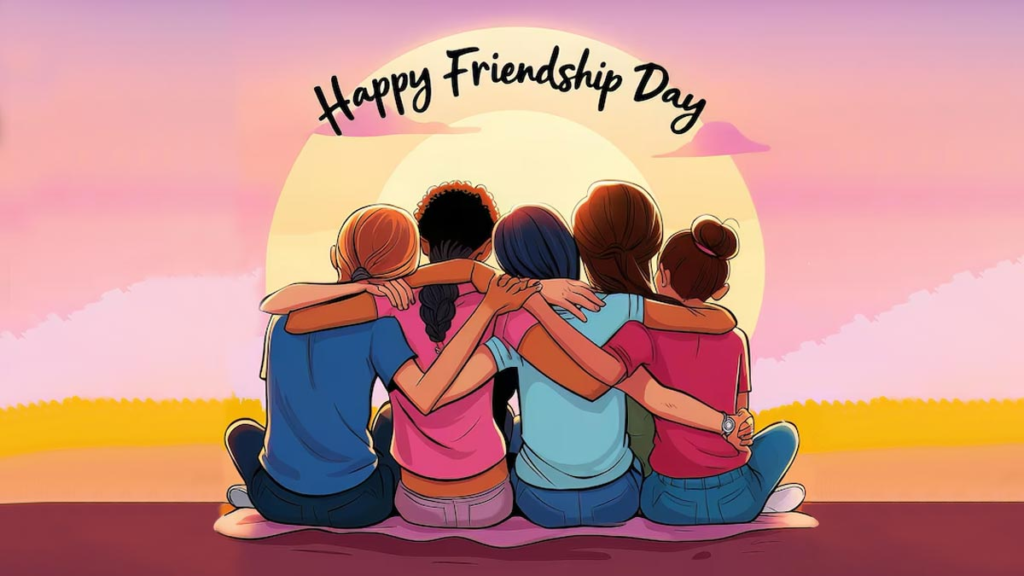
Table of Contents
- Introduction: The Universal Language of Friendship
- Asia’s Bonds of Brotherhood: Raksha Bandhan to Ystävänpäivä
- Africa’s Sacred Circles of Kinship and Trust
- Europe’s Toast to Companions: Feasts, Festivals, and Fellowship
- The Americas: Soul Sisters, Blood Brothers, and Found Families
- Oceania’s Warmth: Communal Life and Lifelong Allies
- Unusual Friendship Traditions You Never Knew Existed
- Lessons from Global Friendship Practices
- The Modern Twist: Digital Friendships and Virtual Celebrations
- Conclusion: Bridging Cultures Through Companionship
1. Introduction: The Universal Language of Friendship
Friendship—though shaped by geography, religion, and tradition—remains one of humanity’s most cherished relationships. From ancient rituals to contemporary customs, cultures around the world find unique and heartfelt ways to celebrate this bond. In this exploration, we journey across continents to uncover the many faces of friendship and the rituals that keep them alive.
2. Asia’s Bonds of Brotherhood: Raksha Bandhan to Ystävänpäivä
Asia is rich with rituals that elevate friendship into sacred tradition.
- India’s Raksha Bandhan isn’t just for siblings. In some regions, friends tie rakhis to express mutual protection.
- China’s Qixi Festival, though romantic in origin, has evolved to include celebrating close friends through gift-giving.
- South Korea’s “Black Day”, held on April 14, is a day where single friends gather to support each other with jajangmyeon (black bean noodles), proving that friendship is worth its own spotlight.
3. Africa’s Sacred Circles of Kinship and Trust
In African cultures, community is friendship, and friendship is survival.
- The Ubuntu philosophy in Southern Africa translates to “I am because we are,” emphasizing empathy and deep connection.
- Initiation rituals in tribes like the Maasai not only build individual identity but also foster lifelong friendships forged through shared trials.
- Storytelling gatherings bind generations of friends, where tales are passed along as threads of shared memory and trust.
4. Europe’s Toast to Companions: Feasts, Festivals, and Fellowship
Europe celebrates friendship through warmth, wine, and witty traditions.
- In Finland, February 14 is Ystävänpäivä—Friendship Day—not just for lovers but for all cherished companions.
- Spain’s Tomatina Festival, while seemingly chaotic, is rooted in community bonding and joyful camaraderie.
- Scottish Ceilidhs, traditional social dances, are spaces where friendships bloom across music and shared movement.
5. The Americas: Soul Sisters, Blood Brothers, and Found Families
In both North and South America, friendship often means found family.
- Native American tribes often included rituals of “blood brotherhood” as sacred alliances.
- In Brazil, “Dia do Amigo” (Friend’s Day) on July 20 is widely celebrated with heartfelt letters and gatherings.
- Mexican quinceañeras and American Sweet Sixteens often highlight best friends just as much as family—because chosen kin matters.
6. Oceania’s Warmth: Communal Life and Lifelong Allies
Friendship in Oceania is an extension of kinship and the land.
- Among the Māori of New Zealand, the concept of whānau (extended family) includes close friends in a tightly woven support net.
- In Papua New Guinea, sing-sings—cultural gatherings—offer space for tribes to share music, dance, and build intertribal friendships.
- Australian mateship is more than a term—it’s a cultural value that defines loyalty, trust, and solidarity.
7. Unusual Friendship Traditions You Never Knew Existed
Across the world, some quirky customs honor friendship with flair.
- Germany’s “Wooden Bench” Tradition: If someone turns 30 and is unmarried, friends decorate a bench and “celebrate” them in public—turning embarrassment into bonding.
- Tanzania’s Hand-Clapping Greetings signify personal warmth and deep-rooted community affection.
- Thailand’s “Pii Nong” Culture uses familial terms between friends to show emotional closeness and respect.
8. Lessons from Global Friendship Practices
What do these diverse customs teach us?
- Ritual builds resilience in relationships.
- Shared struggle and celebration create unbreakable bonds.
- Friendship is cultural glue—holding together people and communities through hardship, joy, and every ordinary day in between.
9. The Modern Twist: Digital Friendships and Virtual Celebrations
In a globalized, screen-first world, friendship has gone digital:
- Friendship bracelets are now exchanged via NFTs.
- Virtual game nights and Zoom reunions have replaced traditional hangouts in many parts of the world.
- Apps like Slowly pair pen pals across countries to revive the lost art of global friendship letter-writing.
Even apart, we find new ways to stay close—and that, too, is a ritual.
10. Conclusion: Bridging Cultures Through Companionship
Across every continent, friendship emerges not as a fleeting feeling but a force that anchors people through time, tradition, and transformation. As we celebrate Friendship Day—or any day that honors human connection—may we draw inspiration from the customs of the world. In shared food, tied threads, tribal dances, and digital chats, we find one timeless truth: wherever you are, friendship is a ritual worth preserving.

